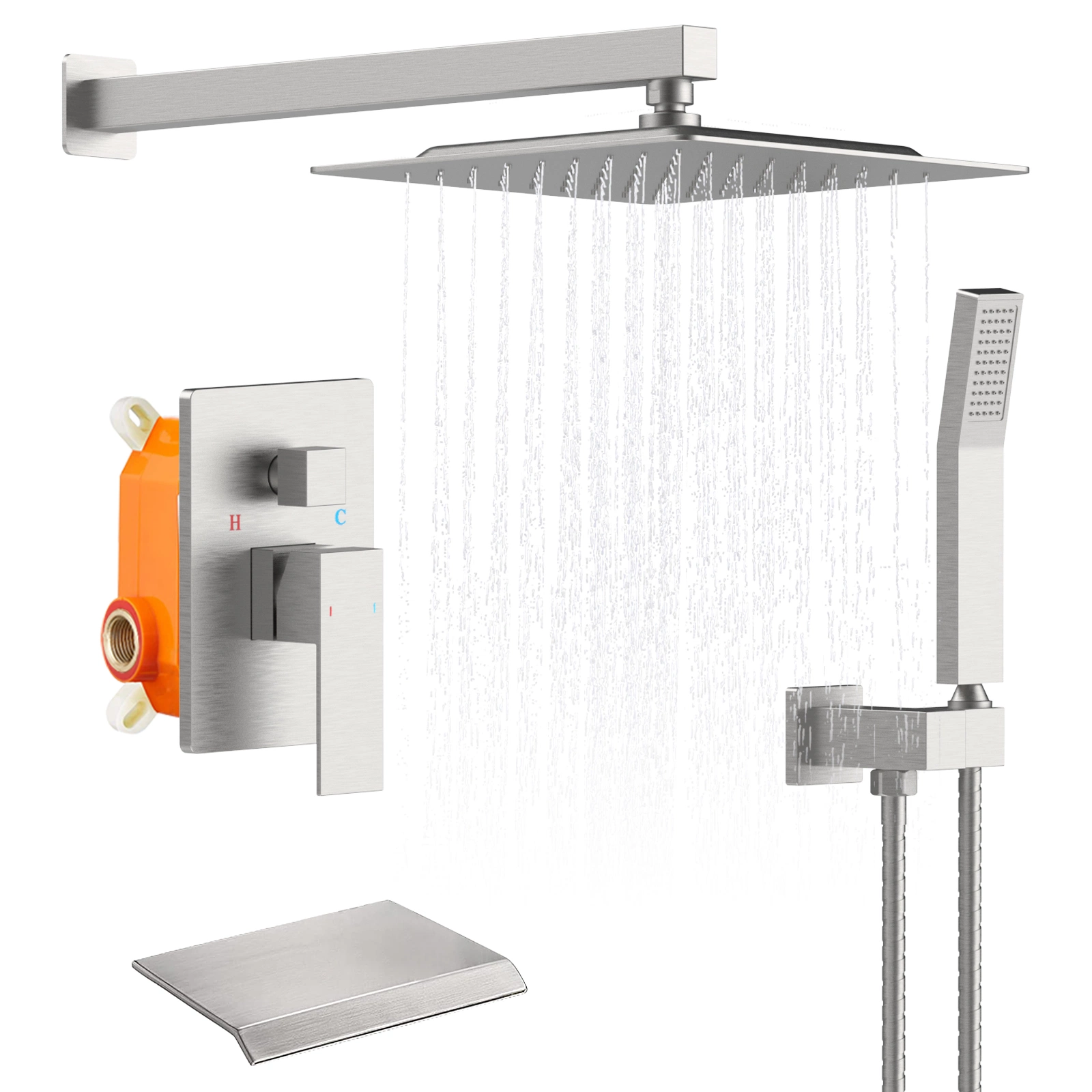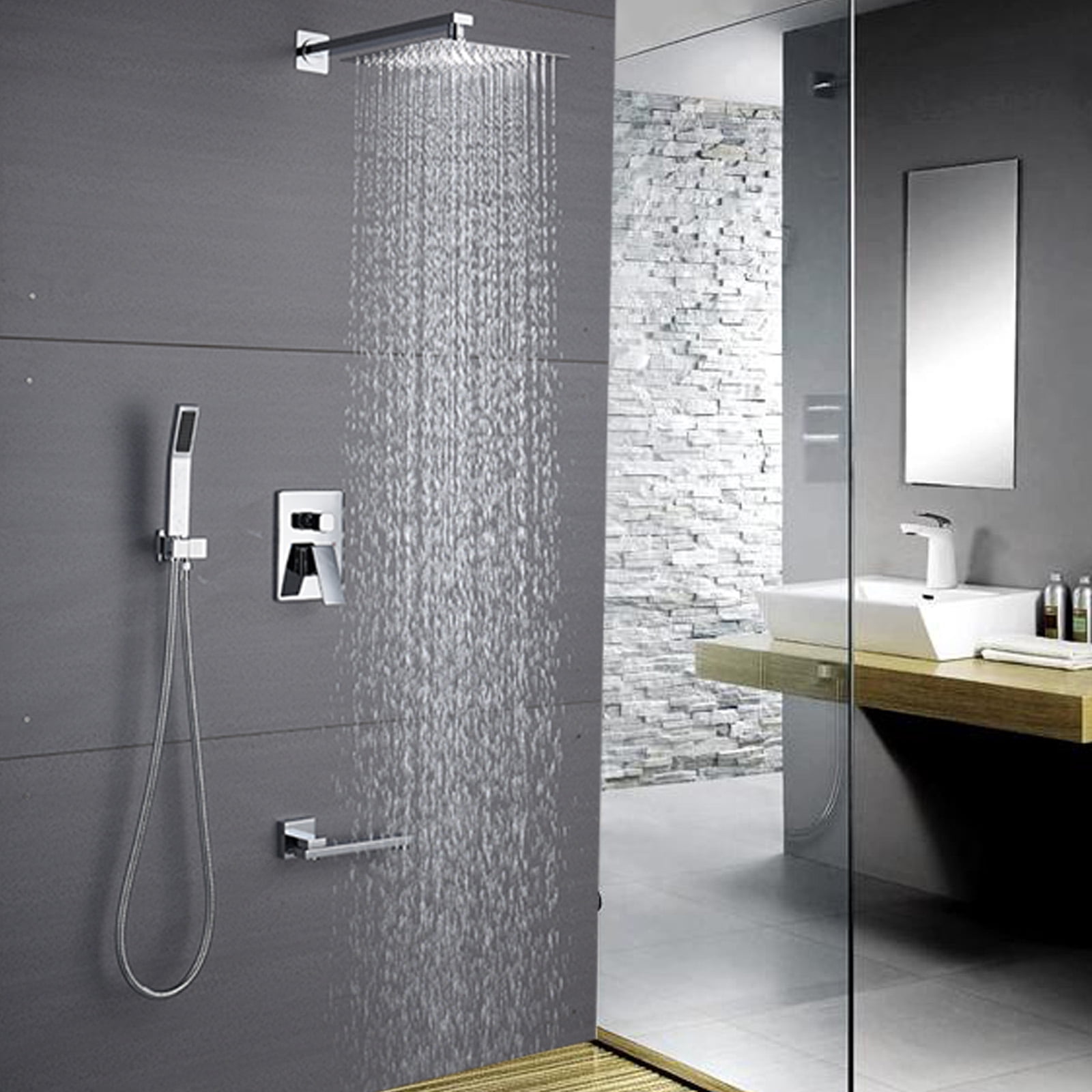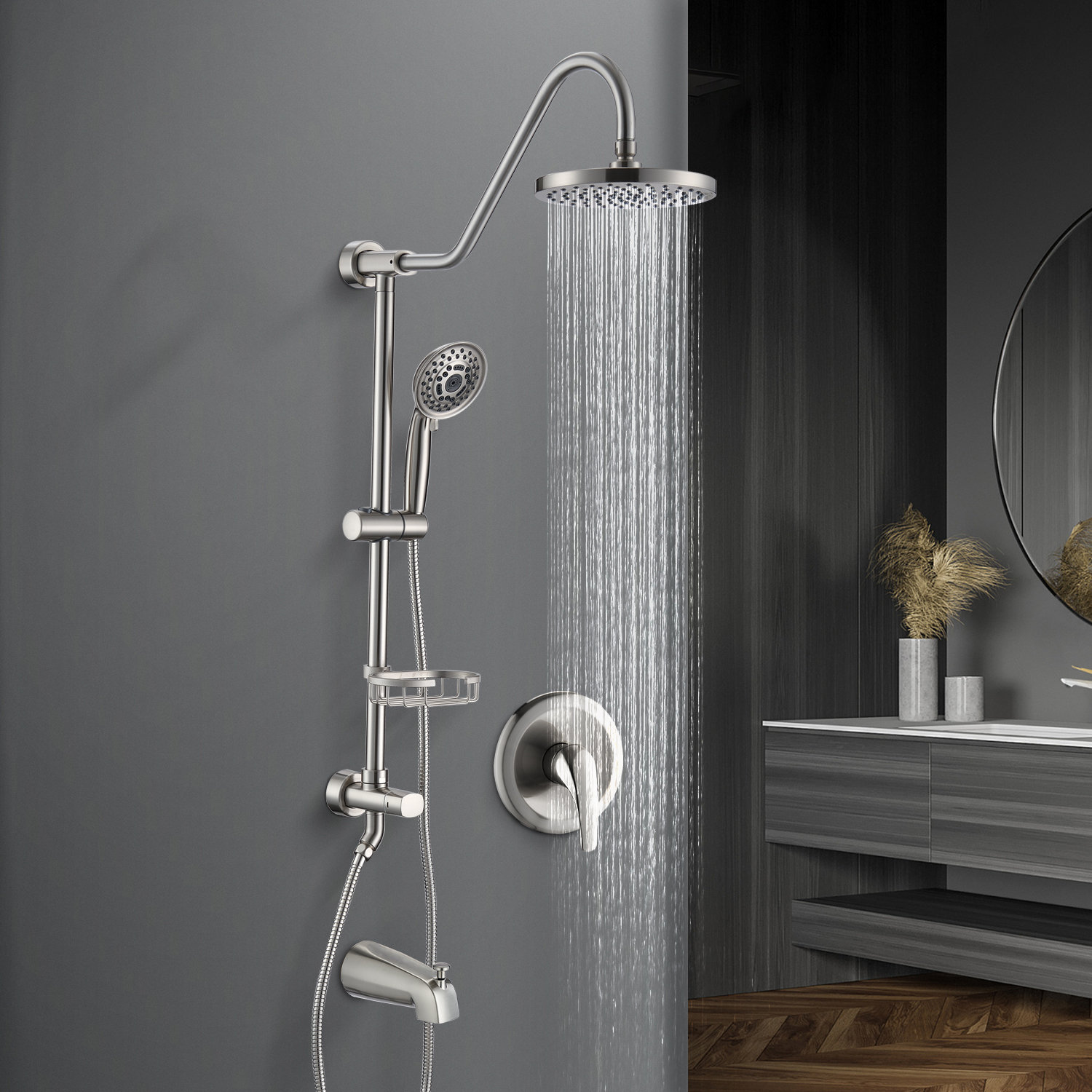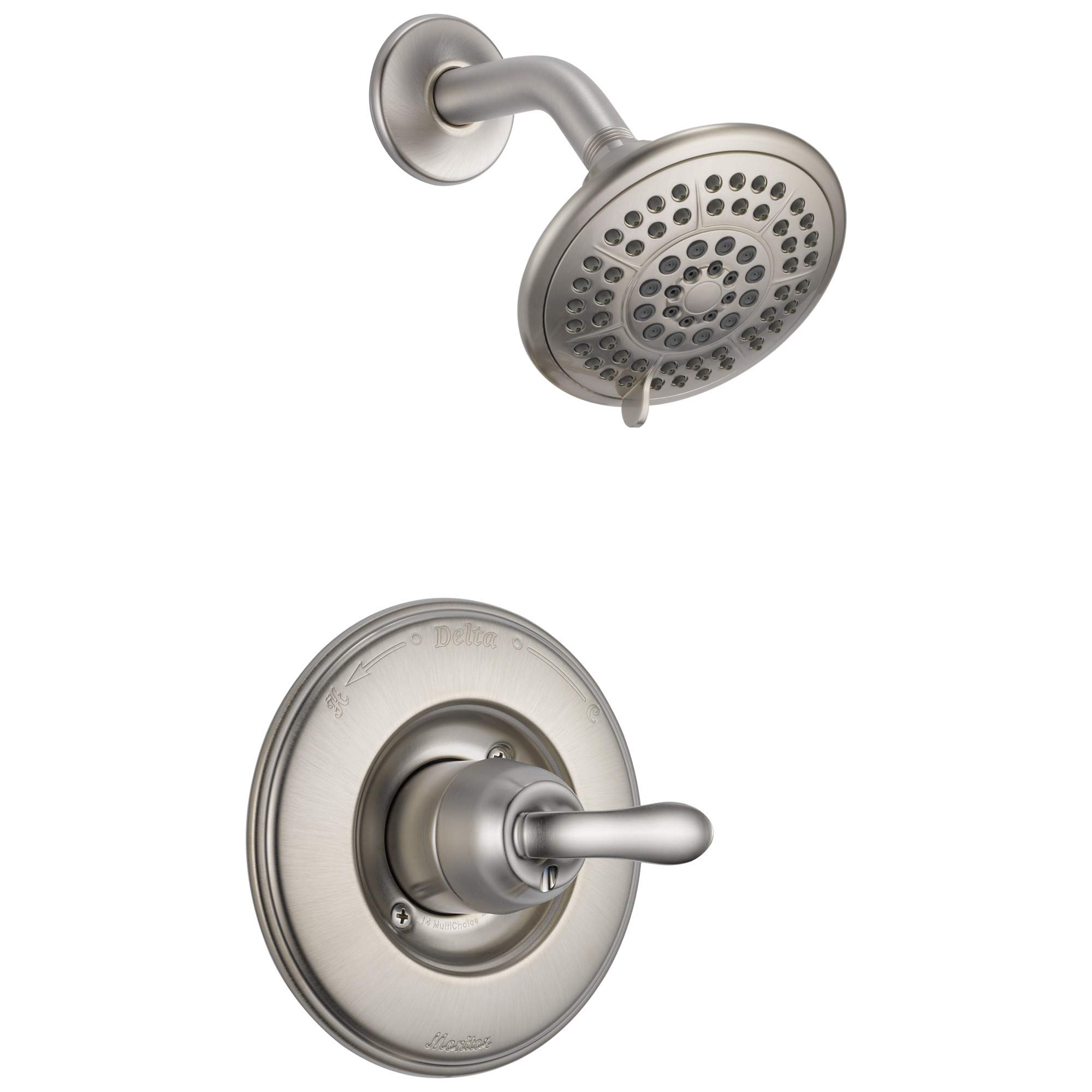Are shower faucets universal? Shower faucets are an essential component of any bathroom, providing control over water flow and temperature. When it comes to replacing or upgrading a shower faucet, understanding whether they are universal can help simplify the process. While some aspects of shower faucets are standardized and interchangeable, there are also variations that need to be considered. In this comprehensive guide, we will explore the topic of whether shower faucets are universal, examining different types of shower faucets, compatibility factors, and installation considerations. By understanding these aspects, you can make informed decisions when it comes to your shower faucet needs.

Types of Shower Faucets:
Single-Handle Mixers: Single-handle mixers have a single lever that controls both the water flow and temperature. This type of shower faucet is designed to work with a mixing valve, which blends hot and cold water to achieve the desired temperature.
Two-Handle Faucets: Two-handle faucets have separate handles for hot and cold water, allowing for individual control of temperature and flow. These faucets usually require a separate pressure balancing or thermostatic valve for controlling the temperature.
Smart and Digital Faucets: Smart and digital faucets use advanced technology for precise temperature control and various customization features. These faucets rely on electronic sensors and controls, allowing for convenient and personalized shower experiences.
Compatibility Factors:
Valve Type: The valve type is a crucial factor when considering the compatibility of shower faucets. Different valve types include pressure-balancing valves, thermostatic valves, and mixing valves. Ensure that the shower faucet you choose is compatible with your existing valve or select a faucet that includes the required valve.
Mounting Style: The mounting style of the faucet refers to how it attaches to the shower wall. Common mounting styles include wall-mounted faucets, deck-mounted faucets, and freestanding faucets. Ensure that the faucet you choose matches the existing mounting style or consider the required modifications during installation.
Hole Configuration: The number of holes in the shower wall determines the compatibility of the faucet. Some faucets require a single hole, while others may require multiple holes for mounting and installation.
Plumbing Connections: Consider the existing plumbing connections in your tiling a bathroom. Ensure that the water supply lines and connections are compatible with the new faucet. If necessary, consult a professional plumber for any modifications or adjustments required.

Installation Considerations:
Professional Installation:
While some experienced DIYers may choose to install a shower faucet themselves, it is recommended to seek professional installation, especially when dealing with complex plumbing systems or unfamiliar valve types. Professional plumbers have the expertise to ensure proper installation, prevent leaks, and address any compatibility issues.
Manufacturer Guidelines:
Follow the manufacturer’s guidelines and instructions when installing a shower faucet. This ensures proper alignment, sealing, and function of the faucet.
Quality and Warranty:
Choose a shower faucet from reputable manufacturers that offer quality products and reliable warranties. This ensures that you have access to support and replacement parts if needed.
Retrofit Solutions:
Trim Kits: If you want to update the look of your shower without replacing the entire faucet, consider using trim kits. Trim kits are designed to fit over existing valves, providing a fresh and updated appearance without modifying the plumbing connections.
Compatibility Adapters: In some cases, compatibility adapters or conversion kits are available to make different shower faucet types or valve connections work together. These adapters can provide a solution when dealing with specific compatibility issues.
How to choose shower faucets
Choosing the right shower faucet is essential for creating a functional and visually appealing accent wall bathroom. With a wide range of styles, finishes, and features available, selecting the perfect shower faucet can be a daunting task. Whether you’re replacing an existing faucet or starting from scratch, there are certain factors to consider when making your decision.

Determine the Faucet Type:
Showerhead and Valve Trim Kits: These kits typically consist of a showerhead, temperature control knob or handle, and other decorative components. They require a separate valve for installation.
Complete Shower Systems: These systems include all necessary components, including a showerhead, temperature control valve, and additional features like body sprays or hand showers. Complete shower systems are a comprehensive solution for a customized and luxurious shower experience.
Consider the Style:
Traditional/Classic: Traditional or classic styles feature elegant, timeless designs that are often characterized by detailed handles, curves, and intricate patterns.
Modern/Contemporary: Modern or contemporary styles are sleek and minimalist, with clean lines and smooth surfaces. They often incorporate simple shapes and innovative designs.
Transitional: Transitional styles blend traditional and modern elements, providing a versatile and balanced aesthetic. These styles combine the best of both worlds, making them suitable for various bathroom decors.
Choose the Finish:
Chrome: Chrome finishes are durable, easy to clean, and versatile, making them a popular choice for contemporary and traditional bathroom wall design.
Brushed Nickel: Brushed nickel finishes offer a warm and muted appearance, providing a contemporary or transitional look. They are resistant to fingerprints and water spots, making them relatively easy to maintain.
Oil-Rubbed Bronze: Oil-rubbed bronze finishes add a touch of luxury and vintage charm to the bathroom. They feature a darker, antiqued appearance and can create an elegant, timeless look.
Other Finishes: There are various other finishes available, ranging from brushed gold to matte black, allowing for customization based on personal preferences and specific bathroom design schemes.

Consider the Features:
Showerhead Options: Consider the type of showerhead you prefer, such as a rain showerhead, handheld showerhead, or multi-function showerhead. Each type offers a different showering experience and benefits.
Temperature Control: Look for a shower faucet with clear temperature markings or digital temperature displays for easy and precise control.
Water Conservation: Consider choosing a shower faucet with water-saving features, such as flow restrictors or eco-performance options, to reduce water consumption without compromising performance.
Thermostatic Control: Thermostatic shower faucets allow you to set and maintain your desired water temperature, ensuring a consistent shower experience.
In conclusion
While some aspects of shower faucets are universal, there are variations in types, valve compatibility, mounting styles, and plumbing connections that need to be considered. Understanding these factors when replacing or upgrading your shower faucet is crucial for a successful installation. Consult manufacturer guidelines, seek professional assistance if needed, and ensure compatibility between the faucet and existing valve systems. By taking these considerations into account, you can choose the right shower faucet for your needs and enjoy a reliable and visually appealing shower experience.

